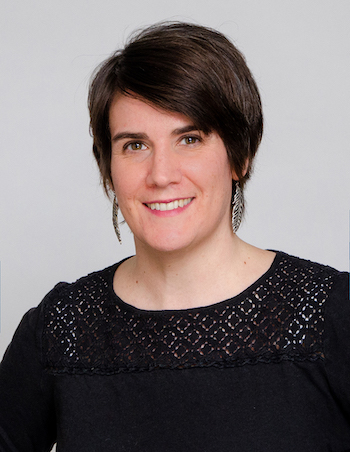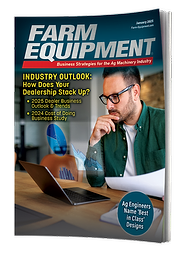In today’s newscast we report on Deere & Co.’s fiscal 2015 outlook, why Global Hunter Securities upgraded Alamo to ‘buy,’ protection from precision ag liability and the growing concern over new equipment inventory levels.
On The Record is brought to you by Ingersoll Tillage.

|
Ingersoll specializes in seedbed solutions. Whatever seedbed challenges you have, Ingersoll can give you the right tools to get the job done. For every tillage and planting practice, there's an ideal Ingersoll application.
Please leave comments about today's episode in the comments section below. You can also send feedback or story suggestions to kschmidt@lesspub.com and cvandermause@lesspub.com.
Deere Forecasts Tough Year Ahead
I’m managing editor Kim Schmidt, welcome to On the Record. Here’s a look at what’s currently impacting the ag equipment industry.
Deere 2015 Ag & Turf Outlook
John Deere reported on Nov. 26 that fourth quarter net income was down 20% year-over-year.
Worldwide Ag & Turf sales were down 13% for the fourth quarter and 9% for the full year. Net sales for North America were down 8% for fiscal year 2014.
Deere also released its 2015 outlook, calling for 2015 to be a trough year. Susan Karlix, manager of investor communications, told investors,
“Although the ag economy remains in a relatively healthy state, lower commodity prices and farm income are putting pressure on demand for farm equipment especially larger models.”
She added, “At the same time, conditions in the livestock sector are more positive providing support to sales of mid- and smaller sized tractors.
As a result, we expect industry sales in the United States and Canada to be down 25-30% for 2015.”
Mig Dobre, analyst with Robert Baird, says they anticipate ag and turf revenue to remain at trough levels into 2016.
On a more positive note, Deere is calling for U.S. and Canadian turf and utility equipment sales to be flat to up 5%.
Alamo Group Upgraded
While many farm equipment manufacturers faced a tough third quarter, Alamo Group had record earnings for the quarter.
Following a visit to the Alamo Group headquarters in Texas, Michael Shlisky, director and senior analyst with Global Hunter Securities, upgraded the specialty ag equipment manufacturer from neutral to buy, despite industry headwinds.
From the ag side, he says since Alamo’s focus is more on livestock and hay equipment it will likely outperform the larger OEMs focused on large tractors and combines.
Another reason for the upgrade had to do with some confusion that resulted from a large private equity firm selling its shares after realigning its strategy, causing some mispricing that has since been corrected.
Finally, Alamo is a big player in the snow removal equipment market, and that had a big impact on the decision to upgrade the company to buy. Here’s what Shlisky had to say.
“Believe it or not, Alamo is the leading maker of snowplow equipment and what drives the sales there isn’t about this year’s forecast for snowfall, but it’s more about what happened last year. Politicians who faced heavy snow fall last year don’t want to be caught again without equipment for the second year in a row. And indeed last year in Alamo’s key regions, snowfall was more than 50% above normal.”
Putting the Focus on Precision Ag Liability
Farm equipment dealers are accustomed to protecting their businesses from common liabilities such as property damage and bodily injury with the necessary insurance coverage.
But are dealerships’ existing policies adequate when it comes to insulation from precision ag liability?
Not always, according to Michael Russell, senior account executive with Federated Mutual Insurance Company. Precision farming has created new liability exposures for dealers that didn’t exist even a few years ago, he says, and many are still in the early stages of determining what additional layers of protection are needed to avoid a potential claim from a customer.
This is a challenge, given that precision technology is evolving at a rapid rate and new products such as Unmanned Aerial Vehicles, are adding additional considerations when dealers consider insurance coverage.
In many cases, dealers are setting expectations for customers with the technology or precision service they provide and there is a potential risk if those expectations aren’t met.
“We’re seeing more dealers have agronomists on staff and so, you have agronomists going out there suggesting that we use this level of fertilizer, or plant different in this part of the country, or space the rows this close.
"If the farmer is not happy about that, the results of that, there’s going to be an allegation that ‘Hey, I took your advice and that didn’t work out for me.’ It’s so different than anything else we see out there.
"There will be an attorney involved and there will be a lawsuit. So we don’t want dealers to be surprised when they submit that to the carrier and the carrier says, sorry, there’s no coverage for that. You have to defend this on your own. It’s one more evolution of business operations that they are dealing with out there.”
To minimize risk, Russell advises that dealers work with insurance companies that specialize in endorsements and risk management tools, because as precision farming continues to evolve, so too will liability exposures and necessary solutions.
High New Equipment Inventories
While there has been much talk about high used equipment inventories over the last year, new equipment inventories have caught up and are now a big concern as well.
October is typically the biggest sales month for both combines and high horsepower tractors, but the Assn. of Equipment Manufacturers’ October sales report showed U.S. row-crop tractors sales decreased 17% in October and inventories increased 7.2% in September.
According to the November Ag Equipment Intelligence Dealer Sentiments & Business Conditions Update, 48% of dealers reported used equipment inventories were “too high” in October, similar to the 47% the previous month.
New equipment inventories, on the other hand, were higher in October with 48% of dealers reporting inventories were “too high.”
New equipment inventories have been growing steadily over the last few months. In September, a net 42% of dealers reported new equipment inventories were “too high” following and a net 38% in August.
Ag Equipment Archives
In 1950, the “Pulvi-Mulcher” is introduced by Brillion Iron Works. This secondary tillage tool tills and compacts a seedbed in one pass, designed to finish and firm the seedbed prior to planting.
Sixty-four years later, new models of the Pulvi-Mulcher are still being used today.
As always we welcome your feedback. You can send comments to kschmidt@lesspub.com. Thanks for watching; I’ll see you next time.






